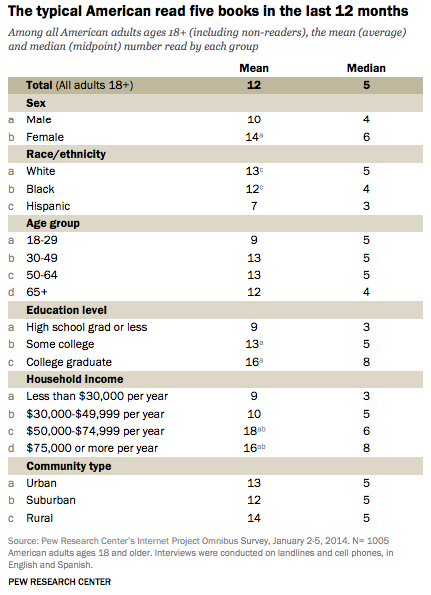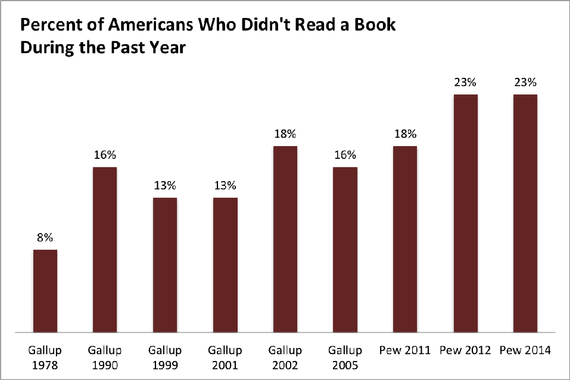And why the downturn might be over.
The Pew Research Center reported last week that nearly a quarter of American adults had not read a single book in the past year. As in, they hadn't cracked a paperback, fired up a Kindle, or even hit play on an audiobook while in the car. The number of non-book-readers has nearly tripled since 1978.
If you are the sort of person who believes that TV and the Internet have turned American culture into a post-literate scrubland full of cat GIFs and reality TV spinoffs, then this news will probably reinforce your worst suspicions. But buried beneath it, I think there's an optimistic story to tell about American book culture. It's about the kids.
Without question, the American bookworm is a rarer species than two or three decades ago, when we didn't enjoy today's abundance of highly distracting gadgets. In 1978, Gallup found that 42 percent of adults had read 11 books or more in the past year (13 percent said they'd read more than 50!). Today, Pew finds that just 28 percent hit the 11 mark.
But here's why I wouldn't proclaim the death of the book quite yet (aside from the fact that the vast majority of the country does still read them).First, as shown on the Pew chart below, the number of books an American reads tends to be closely associated with his or her level of education. Even those with just a little bit of college read far more, on average, than men and women who only finished high school. That may be because people who grow up reading are far more likely to enroll in higher education. But it seems at least somewhat likely that reading books in class conditions people to read books later in life. And the good news (for publishers, at least) is that today's twenty-somethings, as a rule, go to college. A recent Department of Education study found that 85 percent of the high-school class of 2004 had at least some postsecondary education.
It's true that those highly educated young adults aren't reading that many books today. The average 18-to-29 year old finishes nine per year, compared to 13 among older American. But according to the National Endowment for the Arts, teens and twenty-somethings have almost always read less than older adults.
Most importantly, the percentage of young folks reading for pleasure stopped declining. Last year, the NEA found that 52 percent of 18-24 year-olds had read a book outside of work or school, the same as in the pre-Facebook days of 2002. If book culture were in terminal decline, this is the demographic where you'd expect it to be fading fastest. Perhaps the worst of the fall is over.
Via The Atlantic




